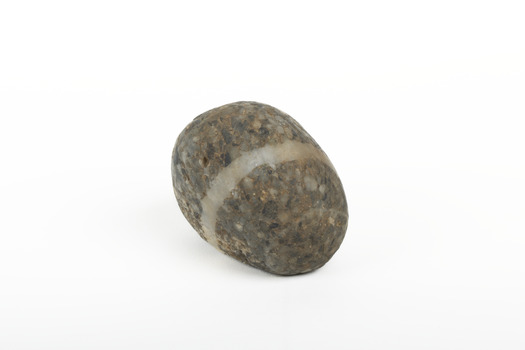Historical information
Quartz is one of the most common minerals in the world. It is formed by a 3d structure of silicon and oxygen. While it is a simple mineral, it can come in a variety of shapes and colours. When quartz is pure it is colourless, transparent and can appear glass-like. Better known and more rare variations of quartz include amethyst and smoky quartz. This specimen is a vein of quartz in Breccia Conglomerate. Breccia is coarse-grained clastic rock which is made up of broken rock fragments and held together by mineral cement.
The locality of this specimen is unknown.
Significance
While quartz is a very common mineral and does not have rarity, it is an important material in industrial settings. One of it's physical and chemical properties is that it is piezoelectric, which means it can be used to generate an electric charge. This has made it useful in the manufacturing of timekeeping devices.
This specimen was donated to the Burke Museum between 1868-1880 among a larger collection of geological specimens. It was collected as part of the Geological Survey of Victoria which begun in 1852 as a response to the Gold Rush. Collections were distributed to organisations across Australia to encourage the further study of the scientific makeup of the Earth.
Physical description
A solid egg-shaped rock with a mineral vein forming a ring around the rock in shades of brown and beige.


















